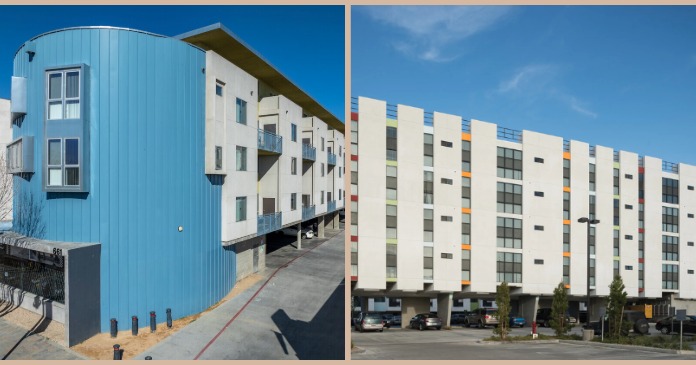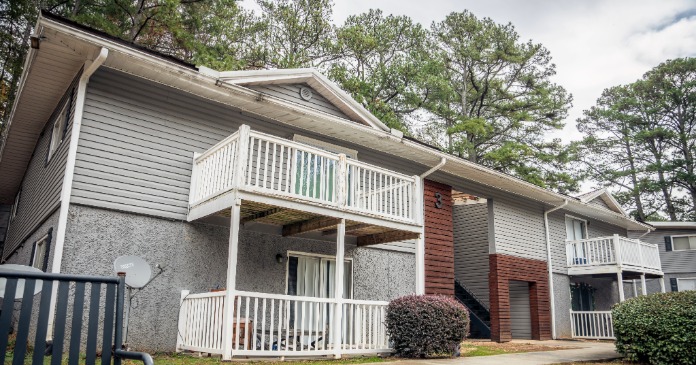
With its high turnover rate and steady demand, the student housing market remains a lucrative niche within the real estate industry.
Student housing properties come in various on and off-campus forms, including dormitories, apartments, and co-ops—both affiliated with the school or owned by a private company. Privately owned student housing enlists property management companies to help maintain and grow the community.
However, managing student housing comes with its own unique set of challenges, so researching student-specific tenancy is critical to developing a property management plan.
The student housing market continues to grow. With the number of enrolled college students in the U.S. expected to reach 19.25 million in 2024 and, as a result, a steady demand for beds, investors are increasingly attracted to this corner of real estate.
In 2019, student housing came in fifth in non-traditional assets preferred by investors, with the total industry transaction figure reaching $22.9 billion in 2022.
With the increasing volume of inventory and residents cycling through each academic year, strong student housing property management is vital. While some multifamily tactics translate to the student housing landscape, managing student housing has unique strategies and specific needs.
Student housing v traditional
A few key traits that separate student housing property management from the traditional multifamily portfolio and, therefore, impact management strategy include:
Billing by the bed: Students prefer options that charge per bed, as opposed to per unit, as this encourages roommate setups for affordability.
Academic year leasing: Unlike traditional multifamily properties, student housing leases typically align with the academic year and last 9-12 months.
Co-signed leases: Guarantors often co-sign leases due to students’ financial inexperience.
Utility management challenges: With multiple residents per unit, divvying up utilities is common and complex.
Tech-driven communication: Students expect fast, digital communication methods.
Student-centric amenities: Students expect amenities geared toward the college experience, including study centers and social facilities.
7 Strategies for success
Managing student housing properties poses distinct challenges that demand a customized approach. Effectively navigating student housing property management can cultivate a positive community experience for residents while safeguarding NOI.
Gen Z, born between 1997 and 2013, forms the largest segment of current college students aged 18-24, making them the prime demographic for student housing.
With this resident audience in mind, there are strategies to overcome the seven common hurdles seen in student housing property management.
Communication breakdowns: Gen Z and younger millennials have higher expectations around technology and communication channels. A 2023 survey from RealPage found that 79 percent of renters look for a centralized communication solution that offers direct message, text or chat options. Considering Gen Z’s standards around seamless and instant customer support and messaging, a robust communication strategy is vital.
Strategy: As a student housing property manager, establishing clear communication channels tailored to student preferences will go a long way. Leveraging a resident mobile app can help property managers efficiently deliver announcements, automate reminder texts or push notifications, organize community meetings, or facilitate conversations with residents.
Fostering community engagement Many students living in a residential community near the school are eager to socialize with fellow tenants and make connections.
This presents an opportunity for property managers to curate an engaged, connected community while building brownie points toward higher retention rates.
While the demographic is ripe for community engagement, it can be difficult for property management and staff to invent and facilitate regular social opportunities.
Strategy: Resources are available to help property managers plan creative community events for students to inspire high resident satisfaction and community engagement. Many property managers also provide a solution that distributes community-wide announcements about events to residents.
Frequent resident changes Dubbed “the turn” or “turn season,” student housing’s annual resident turnover event marks the mass migration of residents as students complete and begin the academic year.
While it’s the most stressful time of the year for student housing property management, it’s also prime time for leasing mistakes to slip through the cracks.
Strategy: Property managers employ several tactics to prepare for the mayhem of turn season. Asset Campus Housing recommends planning early—preparing timelines, deadlines, and budgets ahead of the game—and communicating clearly and frequently with residents. Retaining as many residents as possible also helps minimize the volume of work come lease-end.
Adopting a property management automation solution can alleviate much of the lift during high-stress turnover, ultimately freeing staff to allocate time and energy efficiently.
Inefficient payment process Student residents require extra accommodations when it comes to payments and billing.
Looking at the student renter persona, lack of financial history and experience significantly impacts the rental process. Students may require a co-signer by way of a parent or guardian to help secure a lease. This also explains young renters’ needs for affordable housing, which is why “by the bed” leasing is an attractive option.
Strategy: Understanding the special cases around student renters enables property managers to create seamless processes for both sides. Considering the potential of a co-signer or guarantor, student housing management might employ a digital payment solution to streamline the rental payment process and enable the renter and co-signer to manage payments and provide communication and financial transparency. With most solutions, rental payments are safeguarded, giving student housing management a stress-free back-end experience.
Time-intensive administrative tasks While the turn marks the year’s most chaotic season for student housing, on-site staff must still deal with maintenance requests, payments and billing, pulling reports, and other manual tasks throughout the year.
Managing these burdensome workflows is both time-consuming and expensive. When looking at multifamily property management, staff’s handling of back-office and resident operations throughout the year totaled a staggering 156 hours monthly and over $65,000 annually. While not specific to student housing, this data reflects the sheer amount of time and dollars spent on manual operations in property management.
Strategy: It’s crucial to eliminate tasks that place strain on staff resources. The easiest way to accomplish this is by adopting automated solutions capable of critical yet cumbersome assignments. From utility billing to communication barriers, many of the most tedious property management functions can be automated using property management software and technology.
Utility billing confusion and disputes Due to unique accommodations, utility expense management challenges can stem from an inability to track and determine consumption, irresponsible energy usage, and lack of billing transparency. For the resident, this can lead to confusion and frustration with the property management company.
Strategy: Student housing property managers should bill units by consumption by implementing submeters or using a Ratio Utility Billing System (RUBS), which calculates consumption based on custom property criteria.
RUBS is a cost-effective alternative to submetering and can be tailored to meet the needs of a specific property. By adopting consumption-based billing, student housing property management can better track utility usage and adjust to accommodate “per bed” leasing. This allows property managers to maintain a tight grasp on consumption, better recoup costs, and protect revenue.
Maintaining open, active communication with residents is crucial to minimize the risk of disputes on utility charges.
Billing transparency goes a long way in decreasing the potential for confusion and disagreement. Personalized utility management systems can automate numerous processes, from calculating consumption to laying out charges, while simultaneously securing transactions and providing two-way transparency.
Overlooking sustainability initiatives: Today’s students increasingly express concern about the environment and look for institutions that practice sustainability.
Poor sustainability not only negatively impacts the environment—it can damage revenue. One common utility error that property management professionals make is maintaining inefficient building features. With residential consumption up 10 percent in recent years and utility rates rising, this can be detrimental to NOI. Therefore, effective sustainability measures benefit both residents and property managers.
Strategy: Student housing management can adopt sustainable practices benefiting all parties involved. Billing utilities by consumption, as mentioned, is a fantastic way to track utilization and provides a first step in discouraging over-usage.
Property managers can also implement water conservation initiatives, explore energy-efficient alternatives, and encourage eco-friendly practices. Adopting sustainable measures positions properties as attractive housing options while saving managers resources and revenue.

Elevate student housing management
By implementing these strategies, student housing property management professionals can navigate the complexities of this market and provide positive and efficient living experiences. In adapting to the preferences and demands of students, embracing digital automated solutions, and maintaining a focus on sustainability, property managers can plan for success in the ever-growing student housing landscape.












